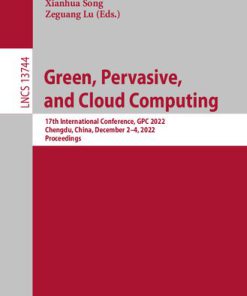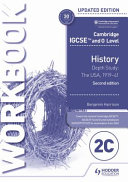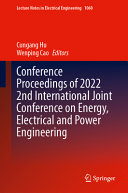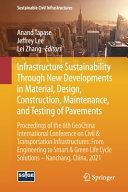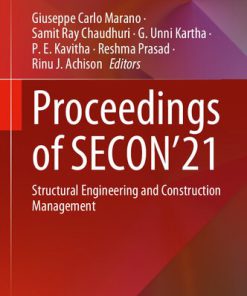Water Conservancy and Civil Construction Volume 2 1st Edition by Saheed Adeyinka Oke, Fauziah Ahmad ISBN 9781000984163 1000984168
$50.00 Original price was: $50.00.$25.00Current price is: $25.00.
Water Conservancy and Civil Construction Volume 2 1st Edition by Saheed Adeyinka Oke, Fauziah Ahmad – Ebook PDF Instant Download/Delivery: 9781000984163 ,1000984168
Full download Water Conservancy and Civil Construction Volume 2 1st Edition after payment
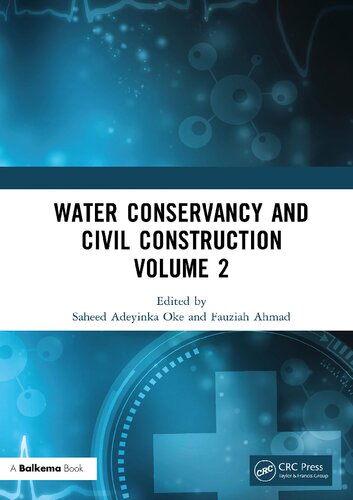
Product details:
ISBN 10: 1000984168
ISBN 13: 9781000984163
Author: Saheed Adeyinka Oke, Fauziah Ahmad
Water Conservancy and Civil Construction Volume 2 1st Edition Table of contents:
1 Introduction
2 Nano-Indentation Test
2.1 Testing method
2.2 Testing process
2.3 Method for scale upgrading
3 Test Results
3.1 Results of the nano-indentation test
3.2 Results of rock mechanical test
4 Analysis and Application
4.1 Error of the results of nano-indentation rock mechanical tests and rock mechanical tests is less
4.2 What BI calculated based on the results of the nano-indentation test meets the requirements of f
5 Conclusions
References
Overall design and key technologies of extra-wide deck space special-shaped arch bridge
1 Introduction
2 Overall Bridge Design
2.1 General layout
2.2 Arch rib structure
2.3 Main beam construction
2.4 Cable design
3 Research on Key Technology of Structure Design
3.1 Study of the bridge landscape scheme
3.2 Research on the structural stress system
3.3 Study on the joint section of arch and beam
3.4 Anchorage system design
3.5 Bridge deck design
3.6 Structural durability design
4 Structural Analysis and Calculation
4.1 Structural calculation model
4.2 Structural static calculation and analysis
4.3 Structural stability analysis
5 Conclusion
References
Research on the algorithm of tooling position and attitude measurement based on a global camera syst
1 Introduction
2 Camera System Construction
2.1 Platform and control system
2.2 Global camera rough pose measurement system
2.2 Workflow
3 Algorithm Research
3.1 Solve angle
3.2 Solve displacement
4 Experimental Verification
5 Conclusion
References
Rigid-flexible coupling analysis of worm and gear reducer based on ANSYS and ADAMS
1 General Instructions
2 Establishment of 3D Model of Worm Gear and Worm Reducer
3 Rigid Body Dynamics Analysis by Adams
4 Rigid-Flexible Coupling Analysis by Adams
4.1 The establishment of modal neutral files
4.2 Rigid-flexible coupling analysis by ADAMS
5 Conclusions
References
Research on the optimization of auto parts inventory cost based on an improved demand forecasting m
1 Introduction
2 GA-PSO-BP Neural Network Algorithm and Demand Forecasting Model
2.1 Analysis of factors influencing demand forecast for automotive parts
2.2 GA-PSO algorithm
2.3 GA-PSO optimized BP neural network algorithm
3 Construction and Solution of Inventory Cost Model
3.1 Conditions and assumptions for model building
3.2 Establishment of the objective function
3.3 Restraint condition
3.4 Solving inventory cost model based on improved differential evolution algorithm
3.4.1 Improvement of differential evolution algorithm
4 Case Validation of Inventory Cost Optimization of Auto Parts
5 Conclusion
References
Design and identification management strategy of privately owned public space in NYC and its enligh
1 Introduction
2 Design and Identification Management Strategy for Pops Development History
2.1 Development of the design and identification procedure for POPS
2.2 Changes of the design standards for POPS in NYC
2.3 Incentive policies of POPS in NYC
2.4 Post-build management and re-identification of POPS in NYC
2.5 Characteristics of the identification management strategy for POPS
3 Status and Problems of Design and Identification of Architecture in Public Open Spaces in China
4 Experience and Enlightenment of Pops in NYC
5 Conclusions
References
Summer thermal environment of building atrium in hot summer and warm winter areas
1 Introduction
2 Thermal environment and typical characteristics of building atrium
2.1 Definition of the architectural atrium
2.2 Thermal environment characteristics of building atrium
2.3 Analysis of thermal environment impact factors
3 Analysis of the Summer Thermal Environment of the Building&x00027;s Lighted Atrium
3.1 Selection of the architectural atrium
3.2 Xiamen a hospital thermal environment experiment
3.3 Xiamen b library thermal environment experiment
3.4 Heat and humidity environment evaluation index
3.5 Library thermal and humid environment analysis
3.6 Comparison of thermal and humid environments in experimental buildings
4 Conclusion
References
Surface settlement prediction of composite stratum shield construction based on e-GRA-LSTM
1 Introduction
2 Principles of the e-GRA-LSTM Surface Settlement Prediction Model
2.1 Principle of the entropy-grey correlation analysis method
2.2 Principles of the LSTM neural network
2.3 E-GRA-LSTM surface settlement prediction model
2.3.1 Data preprocessing
2.3.2 Entropy-grey correlation analysis
2.3.3 Selection of input and output parameters of LSTM
2.3.4 Determine the structure of the LSTM model
2.3.5 Evaluation indicators of the LSTM model
2.3.6 Models for experimental comparison
3 Engineering Examples
3.1 Project overview
3.2 Entropy-grey correlation analysis
3.3 LSTM shield surface settlement prediction model
3.3.1 Selection of LSTM input and output parameters
3.3.2 Construction of the E-GRA-LSTM model
3.4 Analysis of prediction results for surface settlement
4 Conclusions
References
Numerical analysis of wall shedding based on thermal coupling
1 Introduction
2 Heat Transfer Theory
3 Basic Assumptions and the Computational Model
4 Model Calculation and Outcome Analysis
4.1 Displacement analysis
4.1.1 Analysis of displacement results
4.1.2 Displacement analysis of different warming rates
4.2 Temperature field and stress field analysis
5 Conclusions
References
Study on properties of permeable brick with recycled aggregate from construction waste
1 Introduction
2 The Raw Materials
3 Mix Design
3.1 Preparation process
3.2 Mix proportion design of permeable brick test
4 Test Results and Analysis
4.1 Effects of different factors on compressive strength of permeable brick with recycled aggregate
4.2 Effects of different factors on the permeability coefficient of recycled aggregate permeable bri
5 Conclusion
Acknowledgments
References
Analysis of ships vibration causes and application of active vibration control technology
1 Instruction
2 Causes and Hazards of Ship Vibration
2.1 Vibration problems in naval ship design
2.2 Vibration of ships during navigation
2.3 The internal vibration sources
2.3.1 High power and heavy-duty gearbox
2.3.2 Marine diesel generator set
2.3.3 Marine air compressor
2.4 The external vibration sources
3 Application of Ship Vibration Control Technology
3.1 Vibration control of ship internal power equipment
3.1.1 Single- and double-layer vibration isolation devices
3.1.2 Damping vibration isolation device
3.1.3 Floating raft vibration isolation device
3.2 Vibration control of the whole ship
3.2.1 Bilge keel
3.2.2 Stabilizer fin
3.2.3 Damping tank
3.2.4 Rudder rolls damping
3.3 Ship stabilization technology based on the air-floating active control device
4 Development Trend of Ship Vibration Control Technology
5 Conclusion
References
Hysteretic behavior analysis of new energy dissipation fuse system
1 General Instructions
2 Finite Element Simulation Overview
2.1 Structural parameters
2.2 Simulation parameters
2.3 Model validation
3 Finite Element Analysis
3.1 Hysteresis performance of the BASE model
3.2 Parameter analysis
3.2.1 BL series
3.2.2 RS series
3.2.3 RL series
3.2.4 RD series
3.2.5 Significance analysis
4 Conclusion
Acknowledgments
References
SVR algorithm-based prediction of scraper wear for super-large-diameter slurry shield
1 Introduction
2 Project Profile
3 Determination of Prediction Model Function
4 Selection of Prediction Data for Shield Cutter Wear
4.1 Selection of shield cutter wear data
4.2 Selection of influencing factors for shield cutter wear
4.2.1 Length of scraper cutting trajectory
4.2.2 Formation weathering index
5 Wear Data Prediction and Evaluation
5.1 Establishment of prediction formula for shield cutter wear data
5.2 Verification of prediction formula
5.3 Comparison with the empirical formula
5.4 Scraper replacement time
6 Conclusions and Suggestions
References
Study on dynamic stability of geogrid-reinforced cracked slope based on finite element limit analys
1 Introduction
2 Numerical Modeling
2.1 Finite element limit analysis
2.2 Calculation conditions
3 Results Analysis
3.1 Slope safety factor
3.2 Failure mode
3.3 Axial force
4 Conclusions
References
Research on the real-time scheduling model of pumping station group based on differential evolution
1 Introduction
2 Construction of Real-Time Dispatching Model for Cascade Drainage Pumping Station
2.1 Objective function
2.2 Constraints
3 Model Solution
4 Case Study
4.1 Study area
4.2 Project overview
4.3 Data input
5 Results and Discussion
6 Conclusions
Acknowledgments
References
Study on the alignment characteristics of high bridge-tunnel ratio road sections based on Catmull-R
1 Introduction
2 Typical road selection
3 Line shape fitting and geometric feature analysis
3.1 Mathematical basis of the curve
3.2 Lane centerline fitting and geometric feature parameter extraction
3.3 Road alignment characteristics analysis
4 Conclusion
References
Study on smart aggregate for monitoring asphalt pavement health system
1 Introduction
2 Piezoelectric Materials
2.1 Piezoelectric effect
2.2 Piezoelectric equation
3 The Sensing Principle of Piezoelectric Sensors
3.1 Active monitoring method of piezoelectric smart aggregate
3.2 Passive monitoring method of piezoelectric smart aggregate
4 The Development of Piezoelectric Sensors
4.1 Pasted application
4.2 Embedded application
5 Conclusion
References
Process analysis for the demolition work of mid-partition walls in complex foundation pits in super
1 Introduction
2 Project Overview
3 Project Feature and Scheme Selection
4 Demolition of Mid-Partition Wall
4.1 Demolition processes
4.2 The cutting schemes of the mid-partition wall
4.2.1 Selection of cutting equipment
4.2.2 Construction techniques of chainsaw-cutting
4.2.3 The lighterage and hoist-out of the demolished concrete blocks
4.2.4 Machinery selection
4.2.5 The transport of cutting debris
4.3 The horizontal demolition procedure of mid-partition wall
4.4 The vertical demolition procedure of mid-partition wall
4.5 The demolition of single-layer wall body
4.6 The structural replenishment of the mid-partition wall
5 Conclusion
References
Study on the technology of lime expanded pile foundation treatment for airport runway in high-tempe
1 Introduction
2 Reinforcement Mechanism and Test Purpose
2.1 Reinforcement mechanism
2.2 Test purposes
3 Experimental Research Work
3.1 Overview of relying on projects in the test section
3.2 Indoor model test research
3.3 Field test research
4 Analysis and Evaluation of Test Data
5 Numerical Simulation Analysis of The Ground Temperature Field
5.1 Basic equation of the temperature field
5.2 Numerical model establishment
5.3 Model boundary conditions
6 Conclusions
References
Study of tunnel excavation position on the stability of the overlying loess
1 Introduction
2 Finite Element Modeling
2.1 Slope profile
2.2 Loess mechanical parameters
2.2 Loess mechanical parameters
2.2 Loess mechanical parameters
2.2 Loess mechanical parameters
2.2 Loess mechanical parameters
2.2 Loess mechanical parameters
2.2 Loess mechanical parameters
2.2 Loess mechanical parameters
2.2 Loess mechanical parameters
2.2 Loess mechanical parameters
2.2 Loess mechanical parameters
2.2 Loess mechanical parameters
2.2 Loess mechanical parameters
2.2 Loess mechanical parameters
2.2 Loess mechanical parameters
2.2 Loess mechanical parameters
2.2 Loess mechanical parameters
2.2 Loess mechanical parameters
2.3 Model building
3 Analysis of Results
3.1 The vertical distance of 15 m from the top of the slope at the top of the tunnel
3.2 The vertical distance of 20 m from the top of the slope at the top of the tunnel
3.3 The vertical distance of 25 m from the top of the slope at the top of the tunnel
4 Conclusion
References
Research and engineering application of roadbed settlement prediction method based on measured data
1 Introduction
2 Current Status of Related Research Domestically and Abroad
3 Mechanism of Settlement and Deformation of Soft Soil Roadbed
4 Settlement Calculation Method of Soft Soil Foundation
5 Analysis of Foundation Settlement Prediction Methods
6 Conclusion
References
The application of traditional elements in modern architectural design
1 Introduction
2 The Expression Principle of Traditional Elements in Modern Architectural Design
2.1 Principle of unity with function and form
2.2 Principle of element suitability
2.3 Modern aesthetic principle
2.4 Regional principle
3 Examples of the Application of Traditional Architectural Elements in Modern Architectural Design&x
3.1 Traditional architectural elements in Northwest China (Tongzhou)
3.1.1 Building volume
3.1.2 Plane shape
3.1.3 Facade form-three stage
3.1.4 Roof modeling
3.2 The application example&x02014; the architectural creation of the Dali high-speed railway new di
3.2.1 Commercial public building
3.2.1.1 Form and rhythm of architecture
3.2.1.2 Abstraction and simplification of components
3.2.2 Office buildings
3.2.2 Office buildings
3.2.2 Office buildings
3.2.2 Office buildings
3.2.2 Office buildings
3.2.2 Office buildings
3.2.2 Office buildings
3.2.2 Office buildings
3.2.2 Office buildings
3.2.2 Office buildings
3.2.2 Office buildings
3.2.2 Office buildings
3.2.2 Office buildings
3.2.2 Office buildings
3.2.2.1 Form and rhythm of architecture
3.2.2.2 Abstraction and simplification of components
4 Conclusion
References
Structural design of the power distribution building
1 Introduction
2 Engineering Situations
2.1 Proposed building
2.2 Geological condition
3 Structural Design
3.1 Superstructure design
3.2 Pile foundation design
4 Structural Design Suggestions
5 Conclusion
References
Calculation and analysis of foundation pit excavation near river embankment
1 Introduction
2 Project Overview and Geological Conditions
3 Safety Analysis
3.1 Seepage analysis of prototype embankment
3.2 Seepage analysis of dam after engineering treatment
3.3 Dam seepage analysis
4 Analysis of Engineering Measures
5 Conclusion
References
Analysis of the influence of different control water levels on the upstream drainage of Hongze lake
1 Introduction
2 Analysis and Calculation Method
3 Design Drainage Flow and Water Level
4 Analysis of the Impact on the Drainage of the Upstream Area
4.1 Technical means of analysis
4.2 Analysis of drainage impact
4.3 Countermeasure
5 Conclusion
References
Construction technology analysis of 80 meters deep underground diaphragm wall under complex geology
1 Introduction
2 Site Preparation
3 Working Platform
4 Construction Sequence
4.1 Guide wall construction
4.1.1 Guide wall purposes
4.1.2 Guide wall construction process
4.1.3 Guide wall typical details
4.2 Bentonite slurry
4.2.1 Bentonite slurry purposes
4.2.2 Bulk bentonite powder and storage
5 Construction Sequence of Diaphragm Wall
5.1 Stop-ends joint former method
5.2 Milled joint method
5.2.1 Excavating tools
5.2.2 Removal of excavated spoil
5.2.2 Removal of excavated spoil
5.2.2 Removal of excavated spoil
5.2.2 Removal of excavated spoil
5.2.2 Removal of excavated spoil
5.2.2 Removal of excavated spoil
5.2.2 Removal of excavated spoil
5.2.2 Removal of excavated spoil
5.2.2 Removal of excavated spoil
5.2.2 Removal of excavated spoil
5.2.2 Removal of excavated spoil
5.2.2 Removal of excavated spoil
5.2.2 Removal of excavated spoil
5.2.2 Removal of excavated spoil
5.2.2 Removal of excavated spoil
5.2.2 Removal of excavated spoil
5.2.2 Removal of excavated spoil
5.2.2 Removal of excavated spoil
5.2.2 Removal of excavated spoil
5.2.2 Removal of excavated spoil
5.2.2 Removal of excavated spoil
5.2.2 Removal of excavated spoil
6 Conclusions
References
Foundation trench excavation and basin dredging technology in port waterway construction
1 Introduction
2 Project Overview
3 Excavation of Foundation Trench
4 Dredging Construction of Harbor Basin
5 Inspect the Construction Quality
6 Conclusion
References
Study on the interaction and construction time sequence between interchange construction and subway
1 Introduction
2 Modeling Method
2.1 Selection of soil layer parameters
2.2 Shield excavation process and pile foundation
2.2.1 Simulation of the shield excavation process
2.2.2 Simulation of pile foundation parameters
2.3 Model diagram
2.4 Deformation control standard of adjacent pile foundation
3 Analysis of Stratum Deformation Law
3.1 Lateral surface subsidence
3.2 Longitudinal surface displacement
4 Analysis of Stress and Deformation Law of Pile Foundation
5 Conclusions
References
Research on key technologies of underbalanced drilling
1 Introduction
2 Underbalanced Drilling Fluid System
3 Key Technology of Drilling Technology
4 Drilling Well-Control Technology
5 Conclusion
References
Study on optimal and fast drilling technology of extended reach wells
1 Preface
2 Stratigraphic Characteristics of the Study Area
3 Analysis of Drilling Technology
4 Application of Drilling Technology
5 Conclusion
References
Stability analysis of the foundation pit based on the three-dimensional limit equilibrium method
1 Introduction
1.1 Global stability of foundation pit
2 Three-Dimensional Slope Stability Analysis Model
2.1 Algorithm of the 3D model
2.2 Extension of the 3D Janbu model
2.3 Search for the most unfavorable sliding surface
2.4 Technological process
3 Algorithm Case
4 Conclusion
References
A mechanical constitutive damage model for non-penetrating crack rock-like specimen
1 Introduction
2 Experiment
2.1 Specimen creation
2.2 Testing machine
3 Stress-strain relationship
4 Constitutive relation
4.1 Constitutive relation using damage variable
5 Conclusion
References
Smart city and environmental planning and management
Contributing factors to urban transport carbon dioxide emissions and reduction measures
1 Introduction
2 Calculation of CO2 Emissions From Urban Transport
3 Study on the Factors Influencing CO2 Emissions from Urban Transport
3.1 Selection of indicators
3.2 Influencing factor analysis model
3.3 Calculation results
4 Study on Measures to Reduce Carbon Dioxide Emissions from Transportation
4.1 Business as usual
4.2 Emission projections under the effect of a single measure
4.3 Emission projections under the effect of combined measures
5 Conclusions
References
Design and application of a new gas-bearing gas film in the closed coal yard
1 Overview
1.1 Basic information
1.2 Process description
2 Fire Control Design Difficulties
3 Fire Risk Analysis
4 Gas Film Coal Shed Special Fire Protection Design Research Scheme
5 Selection and Application of Fire Protection Design
5.1 Fire division
5.2 Fire emergency lighting and evacuation indication system
5.3 Automatic fire alarm and fire control linkage control system
5.4 Fire protection system and water consumption
5.5 Ventilation system and combustible gas and coal dust control
6 Conclusion
References
Design and construction of urban ventilation corridors based on wind circulation in the Liling cera
1 Background
2 The Construction Method of Urban-Scale Ventilation Corridor
3 Analysis on The Potential of Ventilation and The Selection of Ventilation Corridors In The Urban D
3.1 Overview of design goals
3.2 Determination of the urban design interaction space and compensation space of Liling ceramic val
3.3 Determination of ceramic valley air guide channel
3.4 Construction of the main potential air ducts in the urban design of ceramic valley
4 Conclusion
References
Study on the accumulation and spatial distribution characteristics of sediment in a reservoir
1 Introduction
2 Sample Collection and Analysis Method
2.1 Distribution
2.2 Sample analysis method
2.2.1 Determination of total phosphorus (TP) content of sediment
2.2.2 Determination of total nitrogen (TN) and total sulfur (TS) content of sediment
2.2.3 Determination of sedimentary iron (Fe) and manganese (Mn) content
3 The Accumulation and Spatial Distribution of Each Pollutant
3.1 Spatial distribution characteristics of total phosphorus in sediment
3.2 Spatial distribution characteristics of total nitrogen in sediment
3.3 Spatial distribution characteristics of sediment iron content
3.4 Spatial distribution characteristics of sediment manganese content
3.5 Spatial distribution characteristics of total sulfur content in sediment
3.6 Content of phosphorus, nitrogen, iron, manganese, and sulfur in sediment
4 Conclusions
References
Effects of water and nitrogen coupling on potato yield, water and nitrogen utilization and soil env
1 Introduction
2 Effect of Water-Nitrogen Coupling On Potato
2.1 Effects of water and nitrogen coupling on water and nitrogen use efficiency of potato
2.2 Effects of water and nitrogen coupling on the soil environment of potato
2.3 Effect of water and nitrogen coupling on potato yield
2.4 Effect of water and nitrogen coupling on potato quality
3 Conclusions and Prospects
Acknowledgments
References
Research on the evaluation index system for Yangtze River waterway maintenance effectiveness under
1 Introduction
2 Principles and Ideas For The Construction of The Evaluation Index System
2.1 Principles of construction
2.2 Construction ideas
3 Index System For Evaluating The Yangtze River Waterway Maintenance Effectiveness
3.1 Evaluation of the waterway maintenance effectiveness
3.2 Evaluation of the benefits of waterway maintenance
4 Conclusions
References
Basic prototype and evolutionary logic of clan shrines in northern Guangdong
1 Introduction
2 Planar Evolution
2.1 Unification of ancestral houses into independent ancestral houses
2.2 Independent ancestral halls in the Guangdong-Hunan-Jiangxi area
3 Style Modeling
3.1 Nanxiong Zhuji Lane replicates the classic Qing Dynasty pattern of Guang San road
3.2 Lechang Renhua and Hunan Rucheng ancestral hall head gates similar in shape
4 Unique Symbol
4.1 Clan function extends
4.2 Fusion of Western symbols
5 Conclusion
References
Location planning method of flood control and drainage pumping station based on improved genetic al
1 Introduction
2 The Improved Genetic Programming Method For The Design of Flood Control and Drainage Pumping Stati
2.1 Determine the elevation of the pump station&x00027;s outlet
2.2 Construction of the pumping station location planning model based on an improved genetic algorit
3 The Case Study
3.1 The pump station overview
3.2 The application results
4 Conclusion
References
The application of BIM+AR smart construction technology in municipal engineering
1 Introduction
2 Theory
2.1 BIM technology
2.2 AR technology
2.3 Advantages of BIM+AR technology
3 Project Overview
4 Application of BIM Technology
4.1 Reading link
4.2 Modeling link
5 Application of BIM+AR
5.1 Program design link
5.2 Quality control link
5.3 Site management link
5.4 Follow-up inspection link
6 Conclusion
References
Two-Dimensional numerical analysis of the Nanjiang gate water diversion to improve rivernet water e
1 Introduction
2 Two-Dimensional Mathematical Model of Hydrodynamic Water Environment of Rivers and Lakes
2.1 Basic theory
2.2 Definition of the solution conditions
2.3 Two-dimensional mathematical model verification analysis
3 Sanhui Piece Nanjiang Gate Separate Diversion and Revitalization Scheme
3.1 Calculate boundary conditions
3.2 Water diversion line one
3.3 Water diversion line two
3.4 BOD concentration plane distribution analysis
4 Conclusion
Acknowledgment
References
Study on the urban design guidelines of waterfront space in Pearl River Delta&x02014;taking Foshan
1 Overview of Waterfront Urban Design Guidelines
1.1 From partial design to exhaustive control and guidance
1.2 Depth expansion from the shoreline to inland
1.3 From design to refined management and implementation
2 A Technical Route to Construct A Framework for Waterfront Urban Design Guidelines
2.1 Establishing overall goals and principles
2.2 Reasonable classification of water bodies
2.3 Defining the spatial composition of the waterfronts
2.4 Identifying the controlling elements
3 An Example–Urban Design Guidelines for Waterfront Areas in Urban Water System Planning in Foshan
4 Conclusion
References
Effect analysis of water environment improvement in Sanhui District based on mike21 ECO-LAB modular
1 Introduction
2 Two-Dimensional Mathematical Model and Verification of Dynamic Water Environment of Sanhui Distric
2.1 Basic equation of two-dimensional mathematical model of the dynamic water environment of Sanhui
2.2 Verification analysis of two-dimensional mathematical model
3&x02003;&x02002;Sanhui District Running Water Scheme
3.1 Calculation of boundary conditions
3.2 Separating diversion line of Nanjiang gate
4 Conclusion
Acknowledgment
References
Study on the optimal scheduling of the Jiangsu section of the south to north water transfer project
1 Introduction
2 Study Area
3 Optimal Scheduling Methods and Constraints
3.1 Optimal scheduling methods
3.2 Constraints
4 Differential Evolution Algorithm
4.1 Initialization population
4.2 Mutation
4.3 Crossover
4.4 Selection
5 Results and Discussion
6 Conclusion
References
Evaluation and analysis of low carbon traffic in Jiaozuo city based on comprehensive empowerment me
1 Introduction
2 Low-Carbon Transportation Evaluation Model Construction
2.1 Index weight calculation method
2.2 Gray correlation degree evaluation model
3 Case Analysis of Low-Carbon Traffic in Jiaozuo City
3.1 Data collection of the comprehensive evaluation index of low-carbon transportation in Jiaozuo
3.2 Calculation of weight by comprehensive empowerment method
3.3 Evaluation based on the gray correlation degree
4 Conclusion
References
Structural design and mechanical properties of assembled right-of-way in ecologically sensitive are
1 Introduction
2 Project Overview
3 Structural Analysis and Internal Force Calculation of Assembled Right-of-Way
3.1 Structure and material properties
3.2 Overall structural force simulation calculation
3.3 Concrete slab reinforcement and pile length calculation
4 Discussion
5 Conclusion
References
Research on the strategic choice of logistics development in Urumqi based on AHP-SWOT
1 Introduction
2 Literature Review
3 Strategic Analysis of Logistics Development in Urumqi Based on Ahp-Swot
3.1 Analysis of the current situation of logistics development in Urumqi
3.2 Establishing a SWOT analysis model of logistics development strategy in Urumqi
3.3 Quantitative analysis of key factors in the SWOT model
3.4 Construction of the strategic quadrilateral
3.5 Suggestions for the development of logistics in Urumqi
4 Conclusion
References
Analysis of impact indicators for dynamic management of on-street parking spaces based on hierarchi
1 Introduction
2 Determination of a System of Dynamic Management Indicators for On-Street Parking
2.1 Road conditions S1
2.2 Dynamic traffic impact S2
2.3 Berth utilization S3
3 Model Building
3.1 Establishment of the recursive hierarchy
3.2 Establishment of the judgment matrix
3.3 Hierarchical single ranking and consistency test
3.4 Hierarchical total ranking and consistency test
4 Matlab Simulation Analysis
4.1 Construction of the judgment matrix
4.2 Criterion-level factor weights and consistency tests
4.3 Indicator layer factor weights and consistency tests
4.4 Integrated impact function for dynamic management of parking spaces
5 Conclusion
References
Research and application of new ecological slope protection technology for highways in retention ar
1 Introduction
2 New Ecological Protection Technologies
2.1 Concept design
2.2 Material requirements
2.2.1 Geotechnical bags
2.2.2 Composite geomaterials
2.2.3 Three-way geogrids
2.2.4 Tie down straps
2.2.5 Filled soil for ecological medium bags
2.2.6 Main guest soil materials
2.2.7 Ratio of tree material
2.3 C. Mechanistic analysis
3 Engineering Applications
4 Conclusion
References
Analysis of parking choice behavior in commercial areas based on hybrid logit model
1 Introduction
2 Model Building
2.1 The principle of the hybrid logit model
2.2 Model assumptions
3 Data Survey and Inspection
3.1 Variable selection
3.2 Reliability and validity analysis
4 Model Empirical Analysis
4.1 Structural equation model
4.2 Hybrid logit model
4.3 Analysis of results
5 Conclusion
References
Analysis of college students&x02019; bus travel behavior in the post-epidemic era
1 Introduction
2 Underlying Theory and Model Assumptions
2.1 Fundamental theory
2.2 Model assumptions
3 Analysis of College Students&x02019; Behavior Regarding Public Transportation Travel During The Ep
3.1 Questionnaire design
3.2 Reliability and validity tests
3.3 Model construction and analysis
4 Recommendations for Safe Travel
4.1 Suggestions for schools
4.2 Suggestions for college students to travel
4.3 Recommendations for related transportation companies
5 Conclusion
References
Impact analysis on dynamic response of asphalt pavement structure with semi-rigid base effected by
1 Introduction
2 The Three-Dimensional Dynamic Finite Element Model
2.1 Pavement structure and material parameters
2.2 Model size and cell division
2.3 Boundary conditions
2.4 Load contact areas and load models
2.5 Interlayer contact
2.6 Indicators for analysis of interlayer bonding conditions
3 The Equation Construction of Interlayer Bonding Conditions Decay
4 Model Calculation and Analysis
4.1 Maximum shear stress within the surface layer
4.2 Tensile strain at the bottom of the asphalt layer
5 Conclusion
References
Research on the ultimate protection ability of grade A W-beam barrier based on the bus collision
1 Introduction
2 New Standard and Old Standard
2.1 The collision condition tolerance error
2.2 Evaluation index
3 Collision Model and Collision Analysis
3.1 Collision model
3.2 Collision analysis
4 Exploration of Ultimate Protection Capability
Table 4.&x02003;Simulation evaluation results.
5 Ultimate Protection Capacity Test Verification
6 Conclusion
References
Study on public transportation mode considering group heterogeneity
1 Introduction
2 Data Survey and Statistics
3 Model Building
4 Ordinal Regression Model Analysis of Bus Groups
5 Conclusion
References
Traffic management with households under stochastic bottleneck capacity when school is near home
1 Introduction
2 The Classical Bottleneck Model
3 The Bottleneck Model With Households When School is Near More
3.1 Scenario description
3.2 Equilibrium departure rates
3.3 Possible equilibrium departure patterns
3.4 The critical time points and the mean travel cost
3.5 The boundary conditions
4 Numerical Studies
4.1 The equilibrium pattern diagrams
4.2 Impacts of &x00394;t, &x003B8; and &x003C0; on the mean travel cost
5 Conclusions
References
Analysis of research articles and international standards related to wastewater
1 Introduction
2 Analysis Methods
3 Results and Discussion
3.1 Scientific research
3.2 International standards
4 Conclusions
References
Structural optimization and practical engineering with the rise of modern technology application
1 Introduction
2 Related Work
3 Methodology
3.1 Topology optimization in the structural engineering applications
3.2 Difficulties for implementing the ESO approach in building structures
3.3 Effective stress and stiffness models
3.4 A Measure of global P-norm stress
3.5 Windowed Evolutionary Structural Optimization (WESO) method
3.6 WESO performance indicator
3.7 Comparison of basic supported beams
3.8 Topological construction of D-shape bridge finding structures
3.9 Computer-aided engineering: Grid filtering technique
4 Result and Discussion
4.1 Comparison between WESO and solution
5 Conclusion
Authorship Contribution Statement
Conflict of Interest
References
Analysis of the influencing factors of personal credit for practitioners in the field of engineerin
1 Introduction
2 Literature Review
3 Personal Credit
4 Grounded Theory in Personal Credit Concept Establishment
4.1 Data collection and arrangement
4.1.1 Academic literature
4.1.2 Policy documents
4.2 Category mining and extraction
4.2.1 Open coding
4.2.2 Axial coding
4.2.3 Selective coding
4.2.4 Saturation test
4.3 Results and analysis
5 Identification of Factors Influencing Personal Credit
5.1 Individual dimension
5.2 Environment dimension
5.3 Governance dimension
6 Analysis of Influencing Factors of Personal Credit Based on the Fuzzy-DEMATEL Model
6.1 Cause analysis
6.1.1 Analysis of causal factors
6.1.2 Analysis of outcome factors
6.2 Centrality analysis
6.2.1 Analysis of key influencing factors
6.2.2 Analysis of non-critical influencing factors
7 Conclusions
References
Comparative analysis of carbon emissions of different asphalt pavement structures
1 Introduction
2 Main Construction Materials for Asphalt Pavements
2.1 Asphalt
2.2 Coarse and fine aggregates
2.3 Fillers
3 Structural Inventory Analysis of Asphalt Pavements
4 Calculation and Analysis of Carbon Emissions from Asphalt Pavements
4.1 Calculation of carbon emissions of asphalt pavement materials
4.2 Analysis of carbon emissions from asphalt pavement materials
5 Conclusion
References
Low carbon strategies based on a steel prefabricated hotel in Shenzhen
1 Introduction
2 Project Overview
3 Low-Carbon Strategy Principle of Steel Structure Prefabricated Building
3.1 General principles
3.2 Production and transportation stage
3.2.1 Production stage
3.2.2 Transportation stage
3.3 Construction stage
3.3.1 Artificial carbon savings
3.3.2 Power saving of equipment
3.3.3 Waste and pollution
3.4 Operation stage
3.4.1 Envelope system
3.4.2 Energy saving of equipment
3.5 Demolition stage
3.5.1 Removal and discharge
3.5.2 Recycling and reusing
4 Carbon Emission Calculation For Steel Structure Prefabricated Building
4.1 Calculation of carbon emissions in the production stage of building materials
4.2 Calculation of carbon emissions in the transportation stage of building materials
4.3 Calculation of carbon emission in the operation stage
4.4 Carbon emission summary calculation
5 Conclusion
References
Research on the measurement of headlight downtilt
1 Introduction
2 Definitions
2.1 Initial inclination
2.2 Dipped beam inclination
3 Measuring Conditions
4 Vehicle Preparation
5 Test Method
5.1 General rules
5.2 Determination of initial inclination
5.3 The method of vehicle handling under each loading condition
5.3.1 Vehicles of category M1 fitted with conventional suspension systems
5.3.2 Vehicles of categories M2, M3 and N fitted with conventional suspension systems
5.4 Measurement
6 Test and Data Analysis
6.1 Test
6.2 Data analysis
6.2.1 Standard uncertainty class A assessment
6.2.2 The standard uncertainty UB of the steel tape measure
6.2.3 Uncertainty of synthetic standard
6.2.4 Extended uncertainty
7 Conclusion
References
Experimental study on group root cooperative slope protection at normal temperature in Xining area
1 Introduction
2 Direct Shear Test of Root-Containing Loess at Room Temperature
2.1 Physical property index of soil body
2.2 Selecting materials
2.3 Experimental methods
3 Results and Analysis of Indoor Tests Under Normal Temperature Conditions
3.1 Changes of three root-soil complex specimens with the increase of root content at room temperatu
3.2 Analysis
4 Conclusion
Acknowledgments
References
Modeling and analysis of vehicle infrastructure cooperative industry based on tripartite evolutiona
1 Introduction
2 Model Construction
2.1 Basic assumptions
2.2 Payment matrix
3 Stability Analysis
4 Simulation Analysis
4.1 Influence of initial ratios
4.2 Influence of parameter values
5 Conclusions
People also search for Water Conservancy and Civil Construction Volume 2 1st Edition:
yc water and sewer
waterfront construction company
us water conservation llc
water and sewer utility contractors
water conservancy utah
Tags: Saheed Adeyinka Oke, Fauziah Ahmad, Water Conservancy, Civil Construction
You may also like…
Science (General) - International Conferences and Symposiums
Education Studies & Teaching - Studying & Test Preparation
Science (General) - International Conferences and Symposiums
Engineering - Civil & Structural Engineering
Housekeeping & Leisure - Interior Design & Decoration
Engineering - Robotics & Artificial Intelligence
Education Studies & Teaching - Special Education



